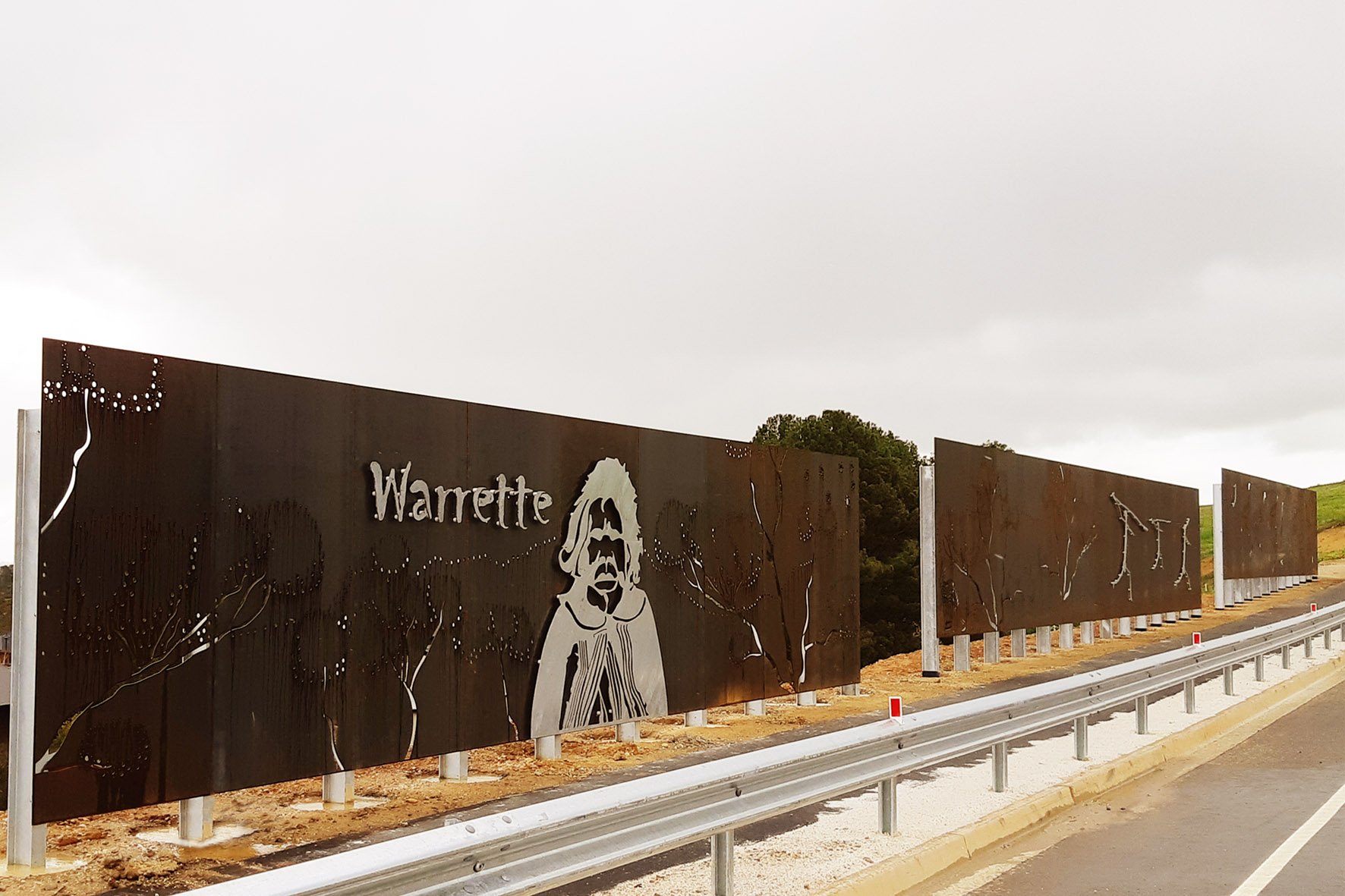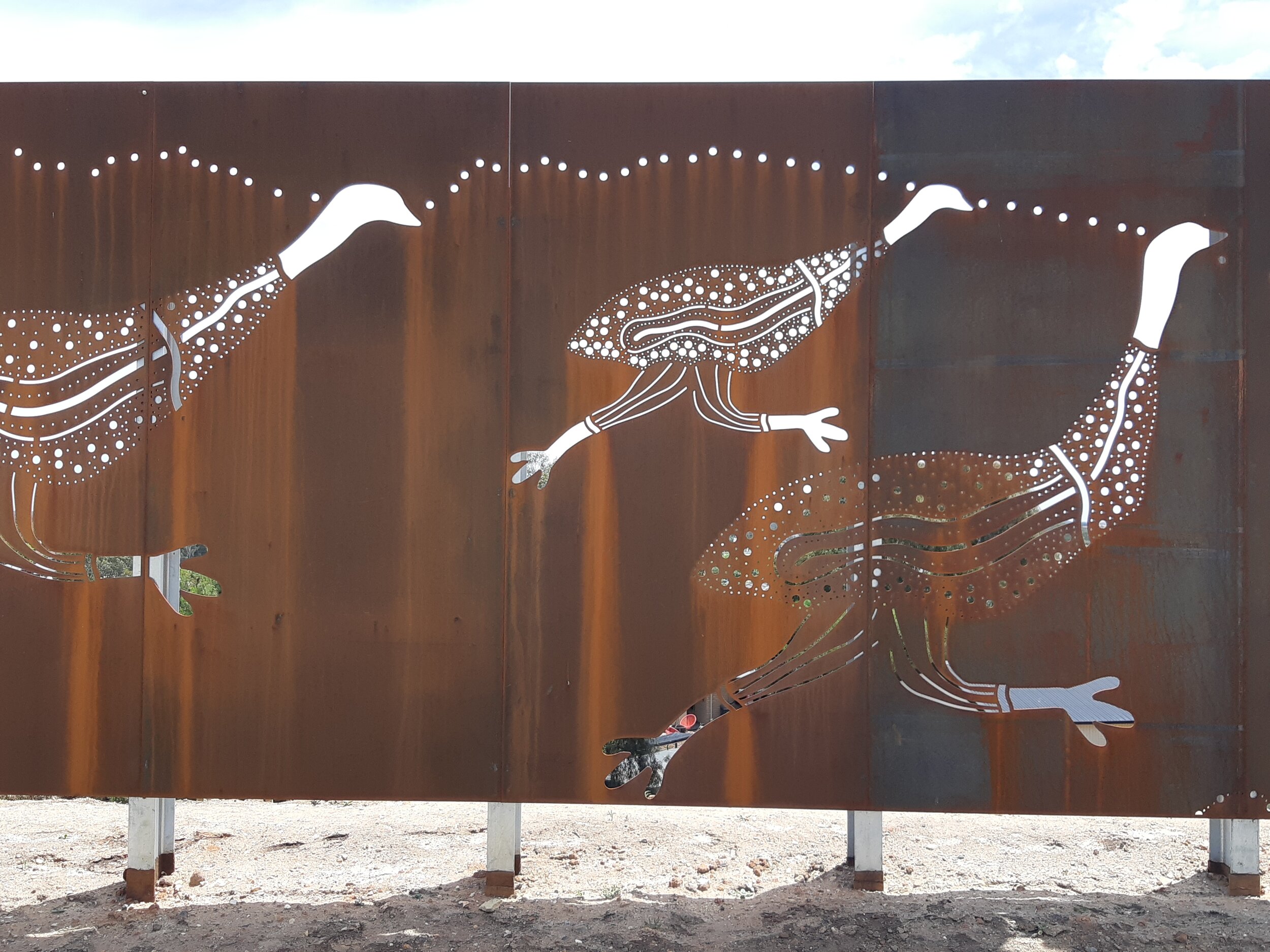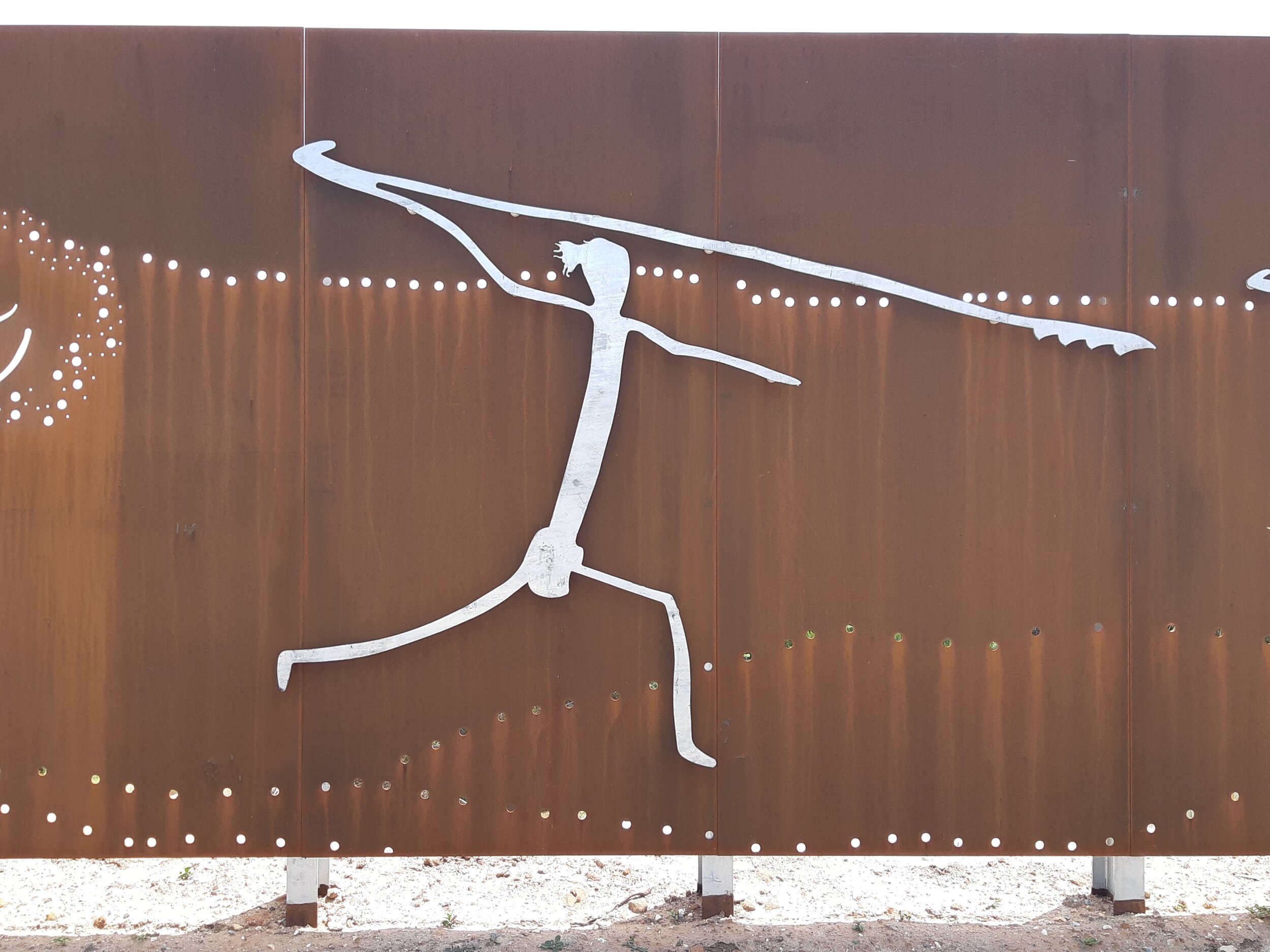Warrette and the Kardi Hunt
Description:
Large metal artistic screens were required as part of the $55M Gawler East Link Road project to provide visual screening of headlight glare for existing residents living adjacent to the new road corridor. Local Kaurna culture inspired the narrative of two artistic screens.
Warrette ‘Last of the Gawler Tribe’: Historical notes of Gawler show that in 1912, Warrette (Emma Pritchard), a Kaurna woman with Ngadjuri connections from the Gawler area was amongst a small group of Aboriginal people ‘mustered up’ in Gawler for being a nuisance and sent to Raukkan, near Meningie in the states south-east to live under the Aborigines Act. Warrette was said to be at the time, The Last of the Gawler Tribe. The artwork portrays Warrette sitting on Country amongst Eucalyptus porosa, South Australian Mallee Box trees and under the Seven Sisters constellation.
Kardi (Emu) Hunt: From south to north the artwork features Tarnta (Red Kangaroo). Kaurna men hunting kardi (emu) amongst undulating stands of Eucalyptus porosa - South Australian Mallee Box. Also featured is the junction of the three rivers: South Para, North Para and Gawler River, which was a well-known camping and meeting ground of the Kaurna people and for neighbouring Aboriginal groups. The section of the South Para River - known as Deadman’s Pass is also referenced, as the Gawler East Link Road Project passes through this area. A large Eucalyptus camaldulensis, River Red Gum tree bears the scars of a Kaurna shield and a coolamon that were once carved from the tree by Kaurna people over 200 years ago.
Completion Date: 2020
Location: Gawler East SA
Aboriginal Country: Kaurna
Acknowledgement: Project undertaken as a DIT employee
Collaborative Partners: Senior Kaurna Elders
Photography: Paul Herzich, Daniel Down - Gawler in Photographs







